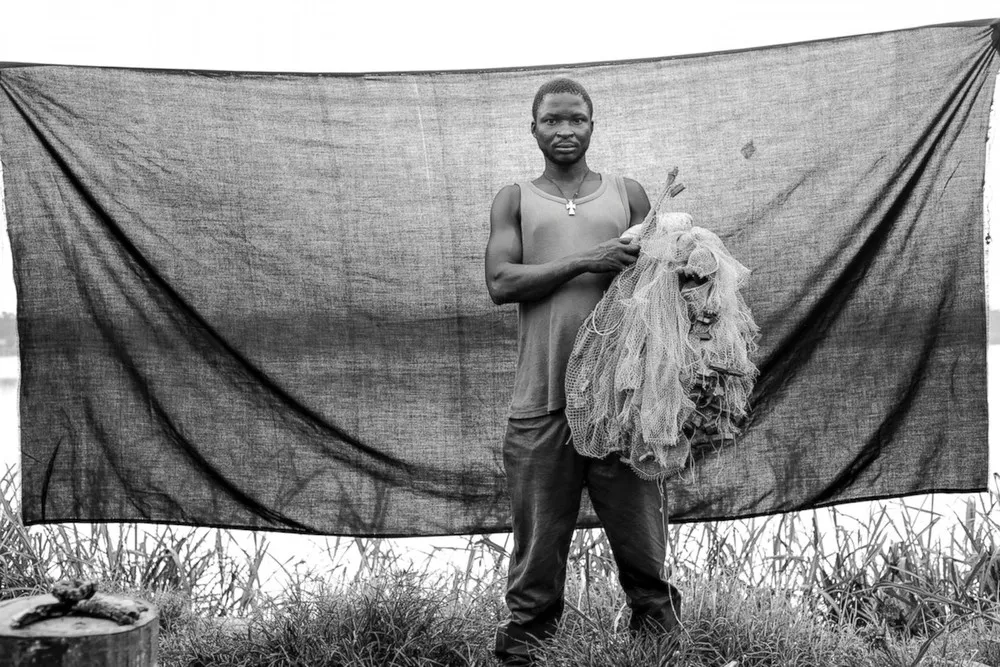|
Gerembo (family name) Jean (given name), 36, poses for a portrait in Batanga transit center for Central African refugees, Equateur Province, Democratic Republic of Congo on 9 August, 2013. Jean recalls the date perfectly, it was Wednesday the 27th of March, 2013 when Seleka forces entered his village of Batalimo. On that day his wife and two children were staying with his mother-in-law, while he was at the home that the four of them share with his widowed mother. The only of five children to survive to adulthood, Jean made his living as a fisherman, and helped his mother with a small business selling palm oil out of their home. The Seleka heard from one of their neighbors that Jean's mother had saved some money, and at 11:45 that night there came a knock at the door. Jean hid beneath his mother's bed and told her to remain silent, and not to answer it. A few moments later, the door was kicked in, and several men entered the dark house waving flashlights. One of the soldiers walked over to the bed and slit the old woman's throat. Terrified, Jean stayed under the bed as they looted the home. At some point, they found his mother's savings and left without discovering him. For the duration of the night he stayed under the bed of his slain mother, gathering the courage to leave the house early the next morning. He found 8 young people who were, as he said, “brave enough to to help me to bury my mother. Meanwhile, his wife had heard of her mother-in-law's murder and fled to the bush with their two children. After the burial, Jean found his family, gathered a few essentials from his wife's mother's house, and together they fled across the Oubangi River in his small fishing boat. The most important thing that Jean was able to bring with him from CAR is the fishing net that he holds in this photograph. He says that the net allows him to live, and to earn. “Some of the fish I sell, some we eat. I use the money to buy clothes and to pay the local people (in Batalimo, DRC) for the plantains, cassava and peanuts we get from their land”. Traumatized by the death of his mother, Jean lives in fear of a return to CAR. Several weeks before this photograph was taken, he was spotted by Seleka troops while fishing. They pointed their guns at him and demanded that he come ashore, at which point they beat him severely and took his catch. “I pray to God to help me”, he says. “Who knows when we will be able to go back? Only God knows. I have to accept to live here (DRC) until peace returns”. Conflict in CAR has caused a mass displacement of people to neighboring DRC. Some 40,000 CAR residents have fled to DRC since April 2013, when Seleka rebels ousted the CAR government. UNHCR and its partners are building four refugee camps in DRC’s Equateur and Oriental Provinces to provide protection and assistance to the refugees and ease the burden on the local population. The process of getting refugees to the camps, however, is not an easy one. Immediately afar fleeing CAR, many refugees take shelter in “transit centers” immediately across the border in DRC. These locations are extremely close to CAR. For their security, refugees are relocated a safe distance from the border to camps, such as Boyabo, where their needs can be better tended to. In Boyabo, families will be provided with a private shelter, non-food items (NFIs), and receive access to health care and more nutritious food. (Photo by Brian Sokol/Panos Pictures)
|

